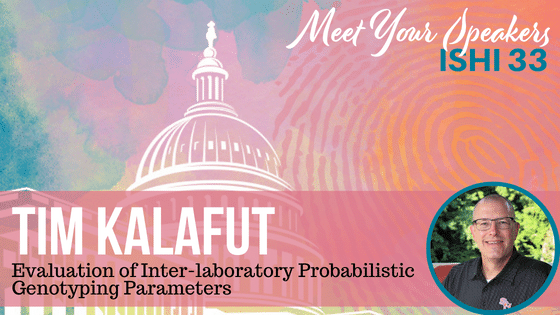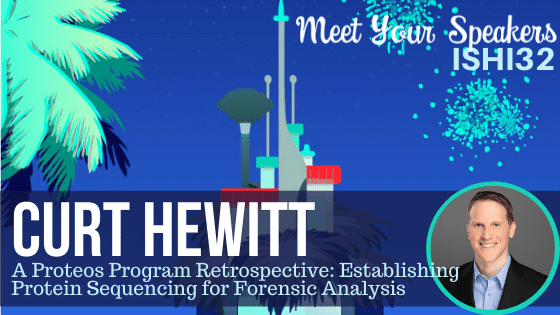Under the Microscope – Tim Kalafut

In his presentation at ISHI 33 this year, Tim Kalafut will describe an interlaboratory DNA interpretation experiment using data from eight forensic biology laboratories and the probabilistic genotyping system STRmix™. Each laboratory contributed twenty mixtures of two to four contributors from their validation studies along with their STRmix™ parameters including STRmix™ kit files and stutters. […]
Simplifying Statistics in Forensic DNA: An Interview with Mike Coble

In this interview, Travis talks with Mike Coble, Associate Professor and the Associate Director of the Center for Human Identification at the University of North Texas Health Science Center in Fort Worth, Texas. Mike has attended ISHI since 1998 and has been sharing his knowledge on probabilistic genotyping and statistics with attendees as a presenter. […]
Unearthing History: How Forensic Analysis of a Racial Massacre is Bringing Closure to a Community 100 Years Later

Today’s blog is written by guest blogger Jordan Nutting, Promega. Reposted from The ISHI Report with permission. On October 19, 2020, in a corner of what was once the African American section of the Potter’s Field in Tulsa’s Oaklawn Cemetery, a backhoe begins scraping away layer after layer of red Oklahoma earth. Workers in […]
Leading the Lab: Working in a Senior Position in Forensic Science

While all leadership roles come with their own unique challenges, those in management roles in the forensic biology field face the difficult task of reducing backlogs, maintaining quality assurance standards, applying for grant funding, and keeping their staff current on training while addressing current caseload requirements and bringing on the latest technologies. Less than 10% […]
Debunking Myths Surrounding Law Enforcement’s Use of Forensic Genetic Genealogy

In 2018, a new technique named Joseph DeAngelo as the Golden State Killer when a small team of investigators uploaded his DNA profile into a publicly available DNA database to reverse engineer his identity based on familial relations. As a part of his 19-year career with the FBI, from 2018 to 2021, former SA […]
What Advice Do You Have For Those Just Starting Out in Forensics?

Maybe you’ve just graduated and are looking for your first job in forensics, or maybe you’re just starting work as an analyst. Either way, trying to find your footing can be tough. That’s why we’ve asked our ISHI 32 speakers to share some pearls of wisdom for those just starting out in the field of […]
Under the Microscope – Jennifer Cihlar

Massively parallel sequencing (MPS) technologies have been extensively evaluated by forensic genomic Research and Development laboratories for the past ten years. Results from these studies have routinely demonstrated the benefits afforded by use of these enhanced technologies and have helped progress the adoption of MPS in forensic genomic laboratories that process biological evidence. The commercial […]
Under the Microscope – Dane Plaza

Rapid DNA technology can provide investigators with real-time investigative information, enhance border security and public safety, aid in prevention and detection of human trafficking, and provide identifications in mass casualty events. While Rapid DNA was designed for operation by non-technical field personnel, it is important to be implemented properly with the complementary support of trained […]
Under the Microscope – Curt Hewitt

For the past three years, Signature Science has been working on the IARPA PROTEOS program to demonstrate that protein sequencing can successfully be used for human forensic identification for samples where DNA was either absent or degraded, specifically touch samples. Together with the University of North Texas Health Science Center and The Ohio State University, […]

